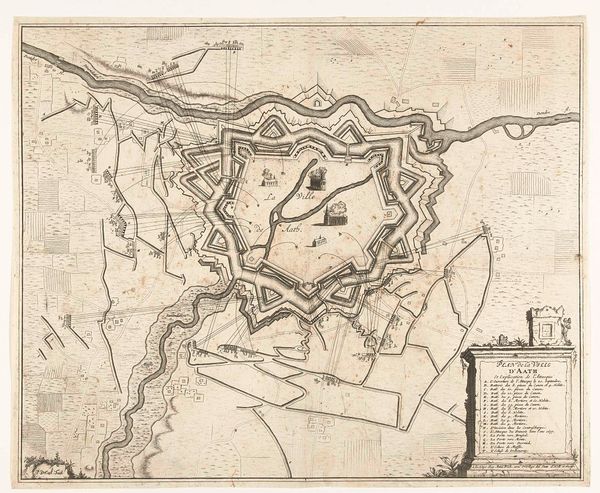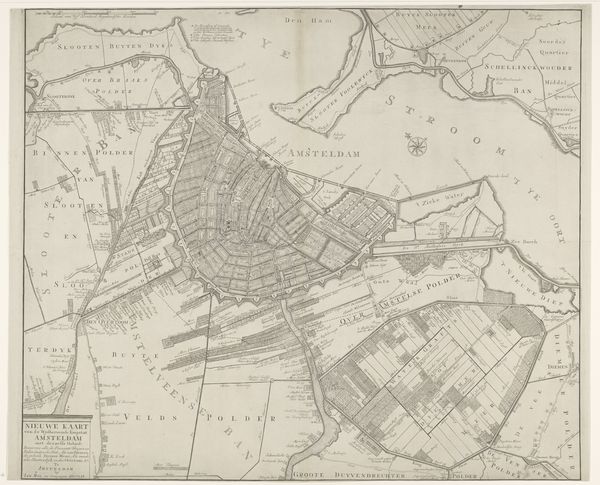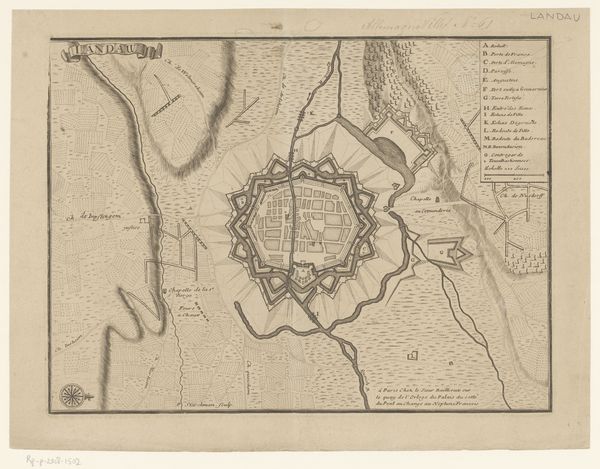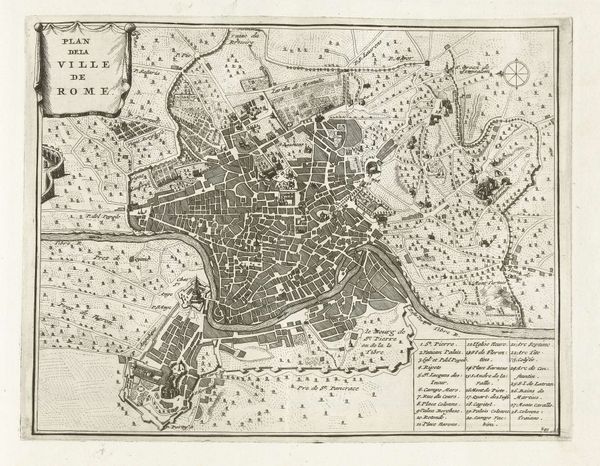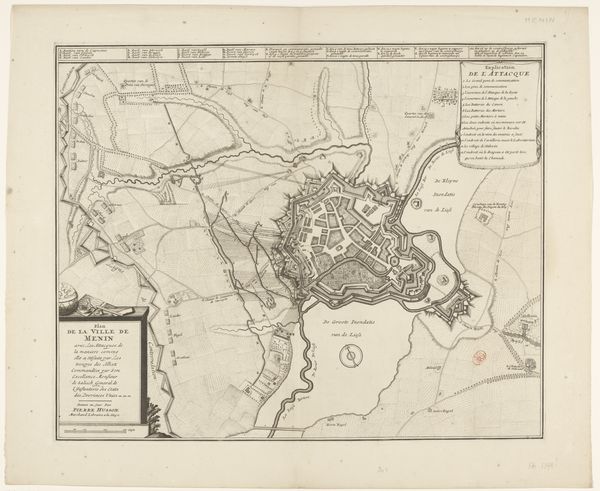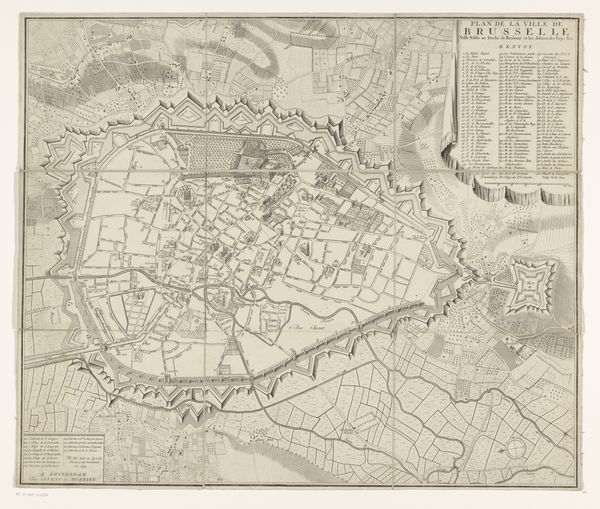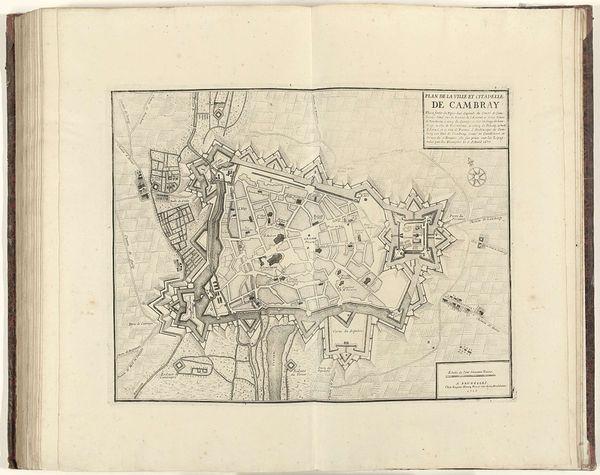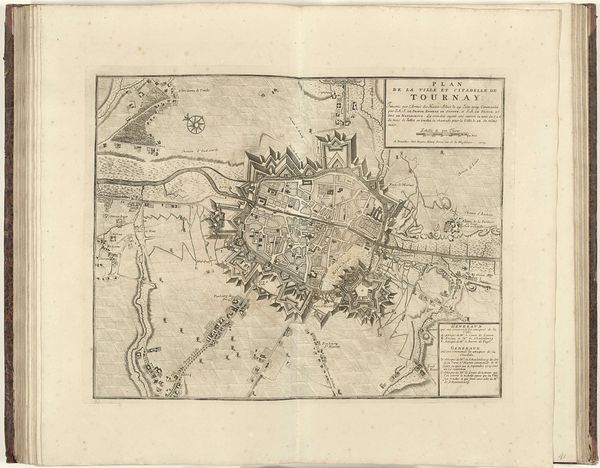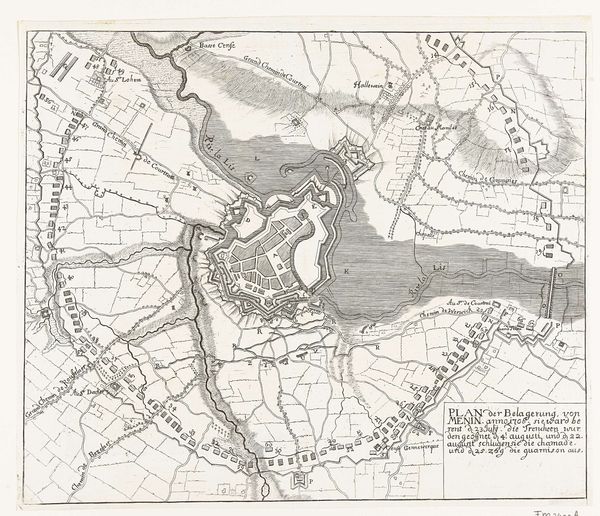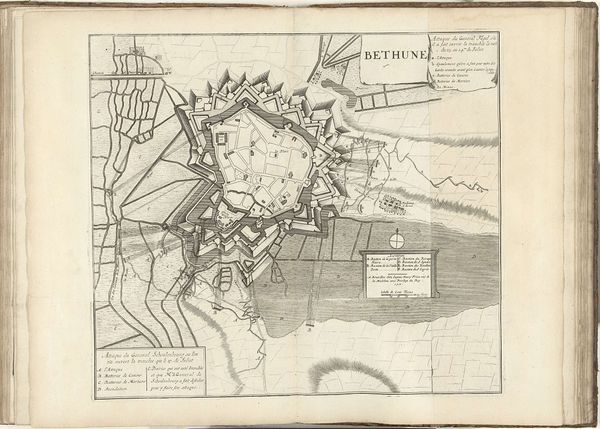
print, engraving
# print
#
geometric
#
history-painting
#
engraving
Dimensions: height 492 mm, width 538 mm
Copyright: Rijks Museum: Open Domain
Curator: We’re looking at an engraving, a print titled “Kaart van het beleg van Lille, 1708,” dating from, unsurprisingly, 1708. It depicts a map of the siege of Lille. Artist: The sheer detail is mesmerizing! It’s all strategic lines and formations, but I get this weird, vulnerable feeling looking at it. Like peeking into someone's fraught strategy session. Curator: Exactly! Look at how meticulously each trench and fortification is rendered. This wasn’t just about recording a historical event, it's a projection of power and control meticulously translated through skilled labor. Consider the material processes involved. The original drawing, the engraver's expertise in translating that onto a copper plate, and finally, the printing itself. The mass production of images served a specific sociopolitical purpose. Artist: Mass production of anxiety, perhaps? Each little mark represents immense planning and human movement... with all of it pointing towards a goal that has everything to do with destruction. I'm hyper-aware of all of this linear energy being funneled in deadly ways. There’s even this strangely pretty geometric pattern created by the city's walls in the center. Makes destruction somehow…beautiful? Or, tragically, gives war a façade of logic? Curator: Beauty as a function of power… Perhaps, or it signifies the order empires sought to impose, made possible by this technique. Also, note how the topography influences military strategy – rivers, fields, all meticulously documented. Engravings such as this allowed information to spread and helped justify political actions to a wider populace. Its scale shows the impressive industrial undertaking involved in creating such things as this. Artist: An unnerving kind of art if you ask me... But art nonetheless, if we're allowed to be loosey-goosey with what we define it as. Like frozen violence immortalized by the printmaker’s labor. Curator: Well, by studying it from this angle, we realize that it does indeed blur the boundary between documentation and a constructed viewpoint intended for political reasons. Thanks to advancements of material and tools that were accessible, as displayed here. Artist: Yes, thanks for making me notice something oddly unsettling but still beautiful about maps for a while.
Comments
No comments
Be the first to comment and join the conversation on the ultimate creative platform.
